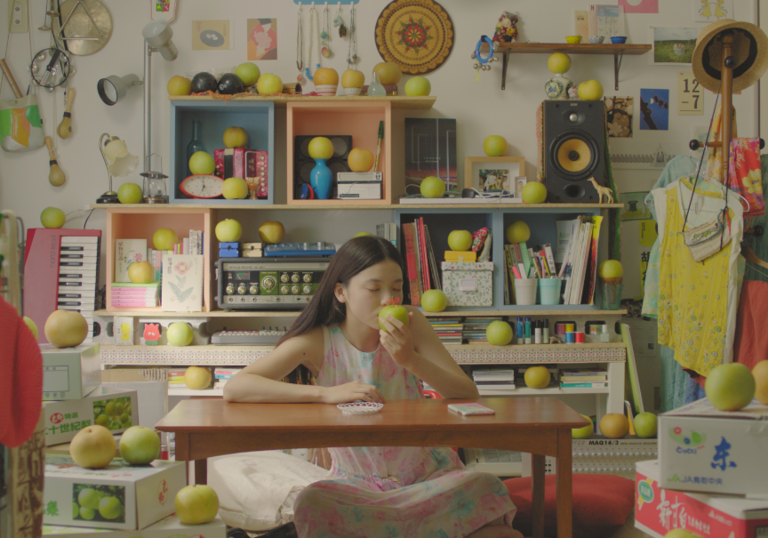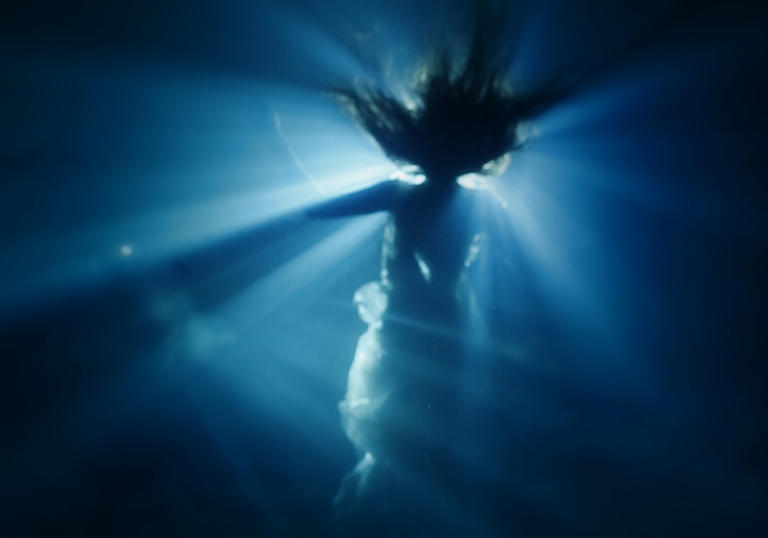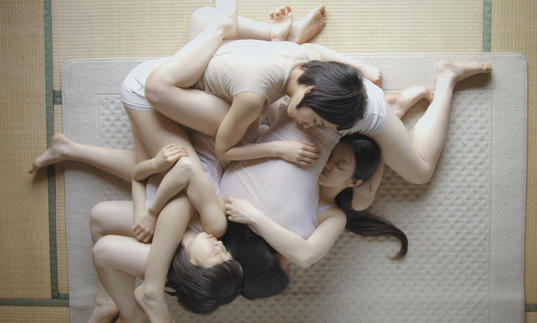Parallels are drawn between Ayano and Satoko and the similarly stifling lives they find themselves trapped in. For the former, she’s a recluse idling time with a hobby in ASMR, and the surprise arrival of the pear promises a ticket out of isolation – she only needs to find the correct destination. Taking the fruit as a puzzle to be solved, she orders boxes of pears from dozens of farms. Adorning her apartment on every available surface, each pear holds the possibility of escape, and in tracking them down, the opportunity to connect with another human being. However, escape is not all Ayano yearns for. She is hungry for contact, too
Everything that I eat,' she says. 'It’s all made from scratch by someone
For Ayano, the puzzle of her pear is not just about the how, but the who. What she doesn’t know though is that the chance to meet its maker is already pre-written. With the red thread of fate tied in a bow around its stem, destiny is manifested.
Contrasting with Ayano’s claustrophobic conditions, Satoko experiences loneliness within vast, open fields in the countryside. Working at a fruit sorting factory, she’s ostracised and judged by her colleagues for choosing to work alone. As she enters her workplace, we see a ranked leaderboard, the camera panning down pairs of spouses and partners, followed by Satoko at the bottom. In this industrial space, pears have been commodified to perpetuate heteronormativity. It’s an entrapment that Satoko begrudgingly tolerates, then violently rebels against when urged one time too many to find a husband. In finding each other, Ayano and Satoko also reclaim the fruit for homosocial relationships.
In history and mythology, pears have long been treasured as something sacred. During Japan’s Edo period, it was believed that pears could ward off evil, and in Greek mythology, a pear was a gift from the gods. In this contemporary setting, Ayano and Satoko use pears to ward off a different kind of evil: the cage society imposes on women. They are a means to escape patriarchal and heteronormative demands, a gateway to a holy sanctuary free from oppression.



